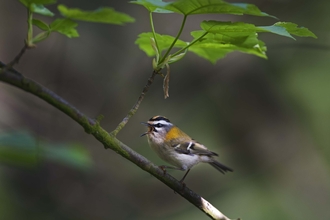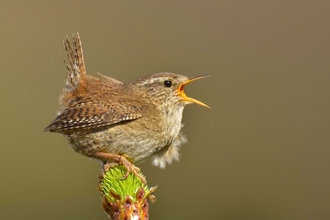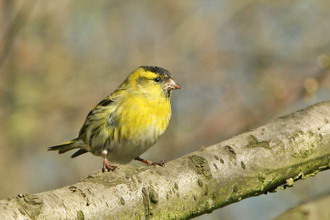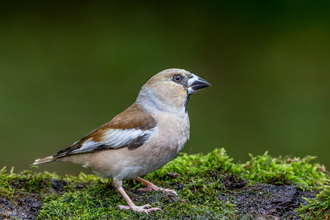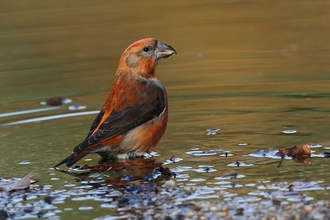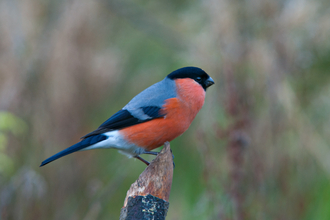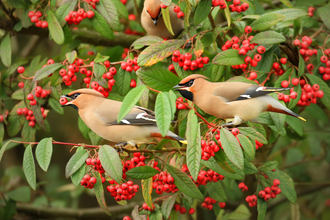Our smallest UK bird is called the goldcrest, which is a tiny species (just 8 - 9 cm long) with green/brown feathers, big black eyes and a very obvious yellow stripe on the top of their head. They prefer to feed high up in pine trees and other conifers, which makes them a challenge to spot, but you can also listen out for their call, which is a high-pitched pip-pip sound. They feed on small insects throughout the year and very rarely sit still for more than a few seconds as they constantly hop around branches in search of food. They belong to a group of birds called kinglets, which are given their names by the different coloured crests, or crowns that the different types have. Another member of the group is the firecrest, which is a rare bird in Shropshire, but increasingly common in southern England.
Another tiny bird to look out for is also one of our most common birds: the wren. Like goldcrests, wrens try to stick to the cover of thick shrubs, bushes and piles of branches, where they can tuck themselves away from predators. You can read more by clicking on the boxes below.


